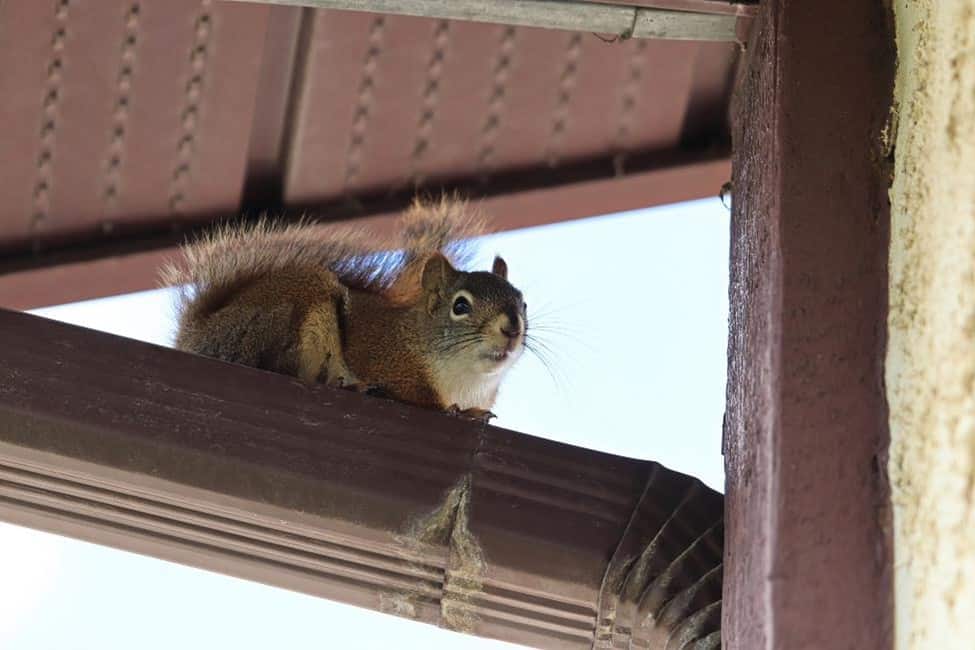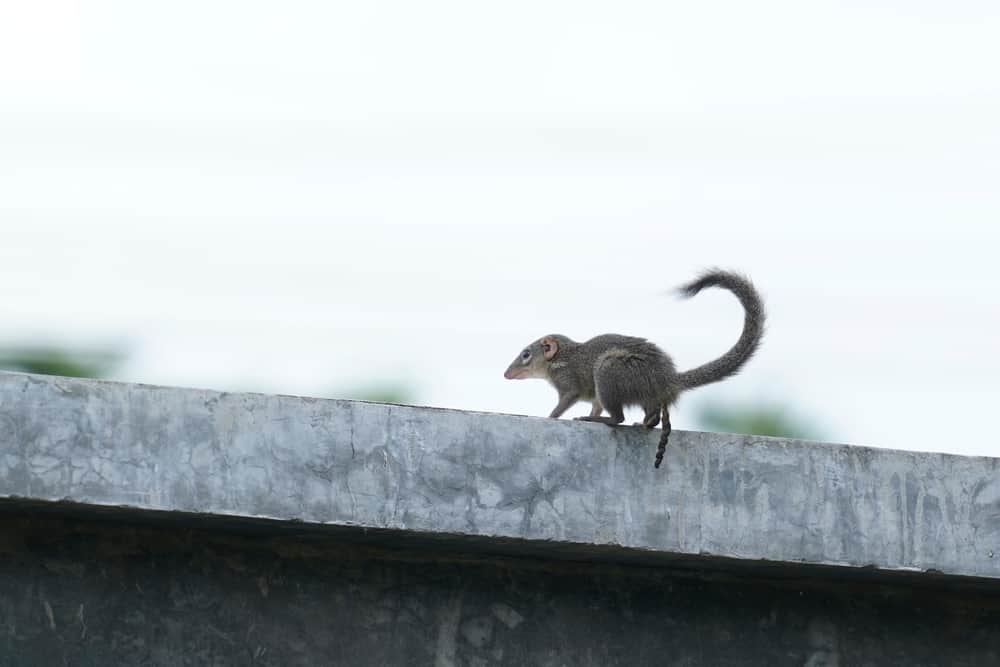Have you ever gone to the park and just watched the squirrels play?
Squirrels can be cute and entertaining to watch in the park, but they can also cause a lot of damage when they invade your personal home or property. Not only do squirrels chew on wires and wood, but their droppings can pose a serious health risk. Squirrel poop may contain bacteria, parasites, viruses, and fungi that are hazardous to humans.
Therefore, it’s important for homeowners to understand the signs of a squirrel infestation in their home, as well as the risks posed by squirrel droppings so that they know how to safely remove them from their property. In this blog post, we will discuss the signs of a squirrel infestation, what squirrel feces look like, where you might find it in your house or yard, potential health risks associated with it, and tips on how to get rid of squirrels if you have an infestation.
What is a Squirrel?
In case you don’t know for sure the difference between squirrels and other small rodents, you will want to learn what a squirrel is.
Squirrels are small, oftentimes tree-dwelling rodents that come in a variety of colors ranging from dark brown to black and even red. Many of them have bushy tails and can be found in parks, backyards, and other outdoor areas.
There are a few main types of squirrels that can be found in North America and other areas of the world. Let’s look at some of the different types:
- The Tree Squirrel – Typically, these squirrels have a reddish-brown or gray fur and can be found in the branches of trees. Tree squirrels are active during the day and sleep at night.
- The Flying or Gliding Squirrel – This type has long, furry membranes between their legs that allow them to glide from tree to tree. They tend to be nocturnal and live in wooded areas with plenty of trees for gliding on.
- The Ground Squirrel – These squirrels are dark brown in color, have short tails, and prefer to live in burrows underground. They are mainly active during the day and can occasionally be seen running around in gardens or yards.
What Does Squirrel Poop Look Like?
Now that you have a better idea of what a squirrel is, you will want to know what does squirrel poop look like. Because if you are having an infestation, one of the main signs will be droppings everywhere.
Squirrel droppings are usually hard, dark brown pellets that are barrel-shaped. They may also have small pieces of undigested material such as fur, seeds, or insects in them. The size can vary depending on the type of squirrel, but squirrel excrement generally ranges from about ¼ inch to ½ inch long with a diameter of about 1/8 inch.
You may be wondering where you will find squirrel poop if it is on your property. The truth is that you might find it in attics, crawl spaces, under the porch, and around bird feeders – basically anywhere that they might congregate for food, water, or shelter from the cold. Squirrels will also leave their droppings near trees, bushes, and vegetable patches where they may be looking for nesting materials.
Is Squirrel Poop Dangerous to Animals and Humans?
So, is squirrel poop dangerous? It’s important to be aware of the potential health risks that come with squirrel droppings and infestations.
Yes, squirrel poop can pose a health hazard to both animals and humans. It may contain bacteria, parasites, viruses, fungi, and other organisms that can cause infections or illnesses if they enter the body through contact with skin, through inhalation, or ingesting contaminated food or water.
For instance, here are some of the diseases that have been linked to squirrel poop:
- Leptospirosis – Leptospirosis is a bacterial illness that can be fatal if left untreated. It is spread through contact with infected urine or droppings and can cause flu-like symptoms, vomiting, and diarrhea.
- Salmonella – This bacterial infection is commonly found in squirrel poop, as it is found in the intestines and then travels down within the feces. It is rarely fatal but can lead to serious illnesses such as fever, abdominal cramps, and diarrhea.
- Parasites – Unfortunately, squirrels may carry parasites such as fleas, larvae, ticks, lice, and mites that are capable of transmitting diseases to humans or other animals.
- Insects – Certain insects such as flies may also lay eggs in squirrel droppings which can hatch into larvae – another potential health risk for people living near an infestation.
- Bacteria – Some bacteria found in squirrel droppings may cause illnesses such as urinary tract infections, respiratory problems, and other serious health issues if ingested or inhaled.
Safety Precautions When Cleaning Up Squirrel Poop
In order to keep yourself safe from the potential health hazards associated with squirrel poop, it is important to take personal safety precautions when cleaning up these droppings.
- First and foremost, be sure to wear protective gear such as gloves, masks, and long-sleeved shirts/pants before you begin the cleanup process. This will protect your skin from coming into contact with any contaminants that could be present in the droppings.
- Additionally, make sure that you dispose of all the droppings in an appropriate and safe manner.
- Finally, ventilate the affected area well to remove any dust or spores that could be present in the air.
- Also, keep an eye out for any signs of rodent urine or nests that may still exist as they can potentially cause health issues if left untreated.
By taking these safety precautions, you can ensure that your home is free from any potential health dangers posed by squirrel poop.
Signs of a Possible Squirrel Infestation

As we have said before, where there is a lot of squirrel poop, there is likely a squirrel infestation.
Here are a few signs that there may be a whole infestation of squirrels in your home or somewhere on your property (such as in your shed, for example):
1. Lots of Squirrel Feces and/or Urine Around
As mentioned, the presence of droppings is one of the main signs that you have an infestation. If you notice multiple piles of poop around your property, this is a good indication that there are squirrels living somewhere nearby.
2. Noises in the Attic or Crawl Space
If it sounds like something is running or scurrying around above your ceiling or in between walls, or if you hear scratching in the walls, attic, basement, or under the back deck, for example, then this could be another sign that you have uninvited guests living on your property.
3. Small Holes, Cracks, or Gaps in the Structure
If squirrels congregate indoors (such as in homes or sheds), they will often enter these structures through small holes and gaps that can be found around doors, windows, or in the attic. If you have found poop and also hear suspicious animal noises, then you may want to search your structure for any of these entry points. If you find one (or several), then it may indicate a possible infestation.
4. Chewed and Damaged Areas
Squirrels tend to chew on items in their environment such as wires, wood, and other materials. Therefore, if you notice chewed or damaged areas on objects inside or outside your home then this could signify a possible infestation.
5. Materials Gathered Like Nests
Lastly, in addition to leaving droppings around, squirrels may also gather materials such as leaves and wood chips or insulation in order to create nests or dens. If you find an area near or in your home that looks like it has been gathered up by something, this could be a sign of an infestation of rodents.
How To Get Rid Of Squirrels
If you have a squirrel infestation in your home or yard the best way to get rid of them is to contact a professional exterminator. The exterminator will be able to advise you on how to safely remove squirrel feces and nests as well as tips on how to prevent future infestations. In addition, they may also set up bait stations or traps in order to catch the squirrels and relocate them away from your property.
Other great tips include if you have bird feeders in your yard, then it’s best to avoid placing them too close to trees or bushes where squirrels can easily access them. Also, try not to leave food out for other wild animals such as rabbits, which may attract squirrels looking for an easy meal.
Conclusion
Squirrel droppings can contain a number of hazardous organisms that may pose a health risk to humans or animals. Knowing the signs of an infestation, as well as what squirrel feces looks like and where it might be found in your home or yard, will help you protect yourself from potential risks. If you do have an infestation, the best way to get rid of them is by contacting a professional exterminator.
Taking steps such as these can help prevent future squirrel intrusions and eliminate any current problems. Have you ever had to deal with squirrel poop? Let us know about it in the comments below.
